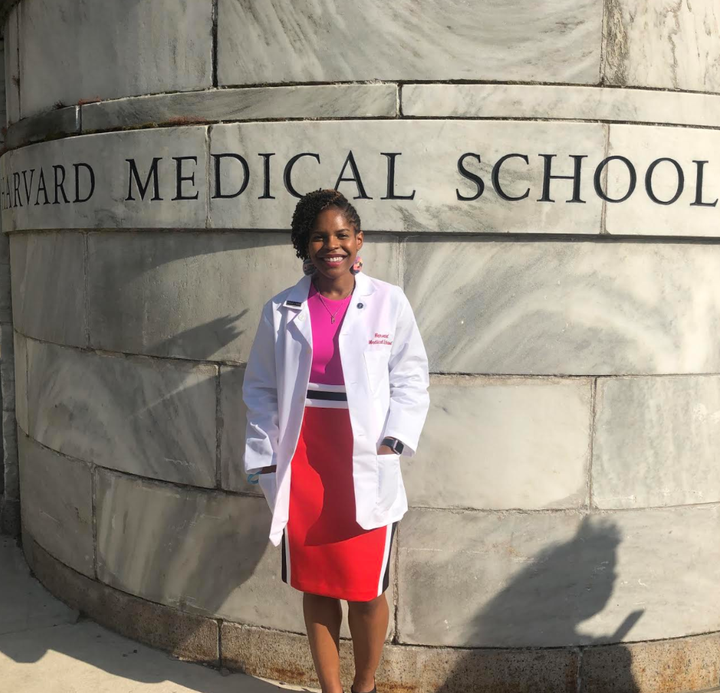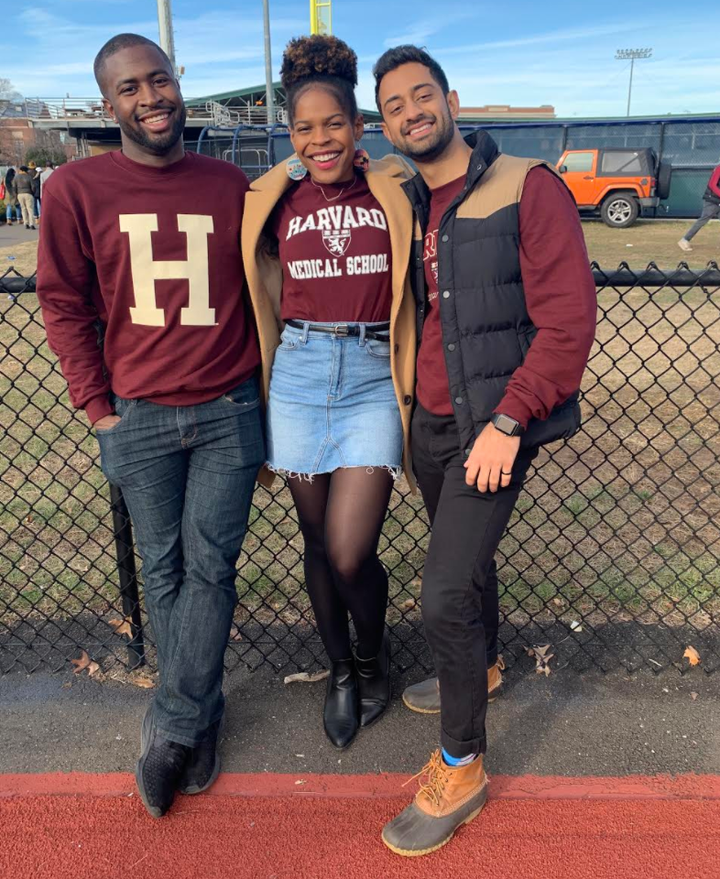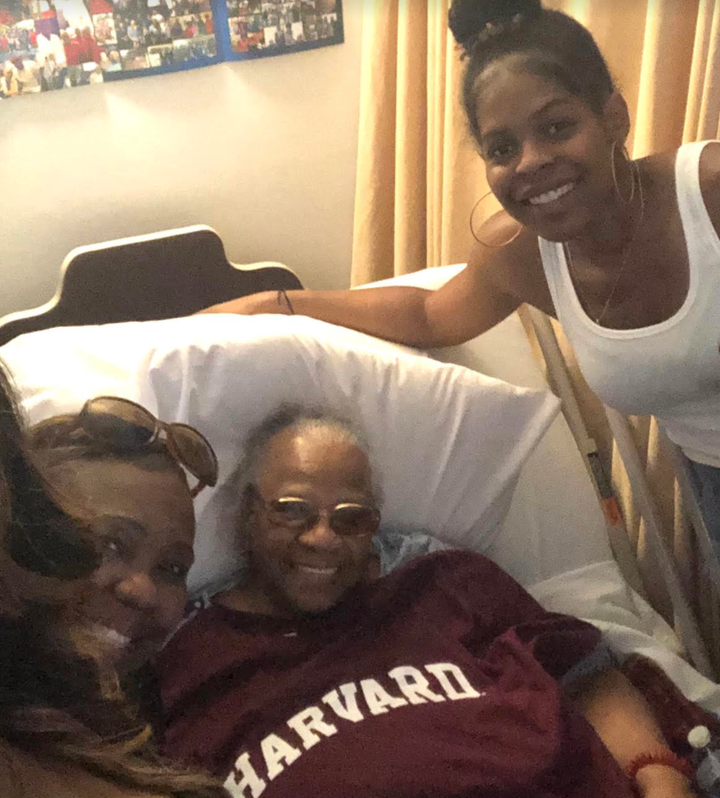
“How are you today?”
“How was your weekend?”
“How’s it going?”
As a Black woman and medical student in the often lonely world of higher education, I’ve learned to respond to these questions with a smile painted on my face and a “Fine, how about you?”
Even when I am feeling devastated, I sit and listen to my white professors as they tell me stories about upcoming trips and detail their latest scientific research. I try my best to focus on their words, but no matter what I do, the suffering of my community is often heavy on my mind.
In the past three months, Covid-19, the great exacerbator, has taken the Black community by storm. Black people are more than twice as likely to die from Covid-19 as white people. Elderly Black individuals are more likely to live in nursing homes, deemed hotspots for Covid-19, compared to their white counterparts, which puts them at greater risk of disease transmission.
I’ve personally witnessed the devastating effect of this inequity. Just one month ago, my great-grandmother, unable to afford at-home-living assistance, contracted Covid-19 at her nursing facility. Thankfully, she recovered, but the more than 21,000 other Black lives disproportionately taken by this deadly virus weren’t so fortunate.
While I was in my classes learning how to heal my future patients, I was also learning that even the power of medicine isn’t enough to quell the deadly effects of systemic racism. As I learned about research for a cure for Covid-19 at one of the best medical schools in the world, deep down I knew if and when a cure was discovered, my family probably wouldn’t be able to afford it.
I often thought about my grandfather, a 67-year-old truck driver with diabetes and hypertension, both risk factors for Covid-19. He should have retired years ago, but because he grew up in the Jim Crow South, his options for professional opportunities were limited, and he was forced to accept low-wage work. Today, he is finally making good money and is able to provide for our family, but it still isn’t sufficient for him to afford to retire. So he is still working, even during the deadliest pandemic the U.S. has seen in decades. I am terrified for his health and safety because beyond his being an elderly essential worker with various chronic diseases, I know that racism has also placed a special target on the backs of Black people in the path of Covid-19.
“How’s it going?” my professors asked me.
“Terribly, because Covid-19 and her sister, systemic racism, are ravaging my community and threatening the lives of the people I love.”
That’s what I wanted to respond, but I didn’t. Instead, once again, I conjured up my fake smile and nodded to whatever they were saying, words that seemed so unimportant compared to the images of my family’s demise that constantly flashed through my mind.
In those moments I once again left my Black experience at the door for the sake of my “professionalism” as a medical student. After years of doing this in high school and college at predominantly white institutions, this has become second nature to me. I’ve developed a mental checklist of sorts for myself:
Smile.
Sound articulate.
Don’t intimidate.
Don’t talk about race.
Definitely don’t talk about racism.
My entire experience in higher education has involved centring my professors’ and colleagues’ white comfort, often at the expense of my own mental wellness. I know this is a harmful practice, but the hierarchical nature of academic medicine and white fragility don’t lend themselves to safe, honest conversations about racism. In these kinds of environments, it feels impossible to answer the question, “How are you?” with honesty when you’re afraid to provoke white guilt or, worse, threaten or damage your academic success.
So I’ve learned to pick and choose my battles. And that often translates into moments when I suffer in silence as I enter the classroom as a medical student, where I am forced to suppress my frustrations and pains as a Black woman. So even as I mourned the disproportionate suffering of Black people during Covid-19 and grieved the tragic killing of Ahmaud Arbery while expressing my frustrations through hip-hop and writing, I ached as I responded to my professors’ questions with, “I’m doing fine, how about you?”

Usually, when faced with these frustrations and sorrows, I depend on my Harvard Medical School Black family — the 17 other Black students at HMS (which may seem like a low number but is surprisingly above average compared to most of America’s medical schools). During these moments we have come together for a warm embrace after class and made plans for our Black family Sunday dinner. But Covid-19 has taken even that away from us.
I am blessed to have good wifi and my own room at my mother’s house. So homework assignments, class and heart-to-hearts with my friends over the internet haven’t been a challenge during the pandemic. But this isn’t a privilege afforded to all my classmates. Some of them have shared with me their struggles with weak internet connections, lack of private spaces to do work and the fatigue of being the “only one” in their virtual learning groups. All of these factors made keeping up with class a struggle, let alone being able to meet up for supportive Zoom gatherings with our community.
So too often we have been forced to forge on alone and answer, “I’m doing fine,” to the question we constantly dread hearing.
Then at the end of May, it became become impossible for me to maintain the separation of my two identities. My Blackness entered along with me through every door I entered ― and this time I wasn’t going to push her out.
In the span of just two short days, I first saw a video of a white woman in New York City’s Central Park potentially putting the life of a Black man in danger by calling the police on him after he rightfully called her out for not obeying the law. Then the next day, I saw another video, this one of George Floyd being killed by a police officer in Minneapolis. When I considered the two videos together, it was as if I had witnessed the devastatingly brutal display of the cause and effect of interpersonal and systemic racism.
“I had come to my breaking point: I knew that my Blackness is my lifeline and that if I didn’t allow every part of me to enter the classroom, I wouldn’t be able to survive.”
A few days later I learned about the murder of Tony McDade, a Black trans man, who was shot to death by the police. And I was still processing the killing of Ahmaud Arbery and Breonna Taylor. I couldn’t take it anymore. I couldn’t breathe, and I felt myself further stifled and suffocated by my academic environment and my inability to be my full self when present there. I had come to my breaking point: I knew that my Blackness is my lifeline and that if I didn’t allow every part of me to enter the classroom, I wouldn’t be able to survive.
So I told the truth.
The following week, when I found myself in office hours with a white professor, they asked me, “How are you today, Lash?”
“Honestly, it’s been a rough weekend for me,” I told them. “There was the Central Park thing, and then yesterday another Black man was murdered. It’s hard to focus on school right now.”
Then something remarkable happened.
My professor took the time to listen to me. They shared with me how they were also frustrated by the video and how ashamed they felt because they had no clue about the killing of George Floyd. We spent 10 minutes talking about the struggles of Black students during this time and how medical education must be improved to make space for these types of conversations.
That day I decided not to act. Not to pretend, not to retract the pain, the burden, so heavy on my back. This level of suffering, they could never fathom that.
I poured these words into my spoken word poetry, and I expressed the freedom and frustration I felt in those moments of conversation with my professor.
I was thankful for that space, but I shouldn’t have been the one who needed to start the conversation.

Non-Black professors, teachers and educators: Your Black students are not okay. We are lonely because the power structures you benefit from make it so that people that look like us rarely have the opportunity to teach us. About 2% of associate professors in academic medicine are Black, and the expectation that all Black students will interact with these professors is a flawed one.
Even then it should not be the responsibility of these professors to mentor, support and educate every Black student at your institutions. That level of responsibility only heightens their potential for professional burnout and detracts from their opportunities to succeed. So that means it’s up to you, white professors, to do the work to create spaces for Black students to excel beyond asking them how they are doing as they tackle community trauma in isolation.
The first step to doing so is letting go of the false idea we live in a post-racial society. While it may benefit you to not see color, it only harms me. I want you to see my color. Because along with my melanated skin comes the reality of my unique struggles, the resilient stories of my ancestors and the strength of my community.
The colorblind approach can lead you to believe that one of your students could never be brutalized by a police officer or unjustly taken into custody. The truth is, despite the fact I wear a white coat with a Harvard Medical School ID, my fate is inextricably tied to the death of Breonna Taylor and countless other Black lives lost to racism. My body is not so different from the lynched Black bodies that flood televisions across the nation. It is only a matter of location and circumstances that separates our fates.
“We need support, and we demand action from our institutions, but the first step is recognizing the entirety of our existence ― the merging of our dual realities as students and Black people.”
Black students are not unicorns. We feel, and we hurt deeply as a result of the injustices we too frequently witness because they are connected to our families, experiences and communities. Educators must learn to accept our Blackness and see beyond the veil of our stature as scholars. We need support, and we demand action from our institutions, but the first step is recognising the entirety of our existence ― the merging of our dual realities as students and Black people.
We need you to see us. We need you to see our Blackness. We need you to help us fight to protect it. We need you to see us beyond diversity and inclusion committees. We need you to watch the news. We need you to care about Black news. We need you to be just as outraged by disparate Black suffering as we are. We need you to cry with us. We need you to care about us.
“How are you doing?” isn’t enough. You should know I’m not okay, and you should do the work to make sure you aren’t contributing to the reason I’m not.
Anti-racism is the only way, and it’s time for you to do the work.
LaShyra “Lash” Nolen (@LashNolen) is an activist, writer, and rising second-year student at Harvard Medical School. This article first appeared on HuffPost Personal.
